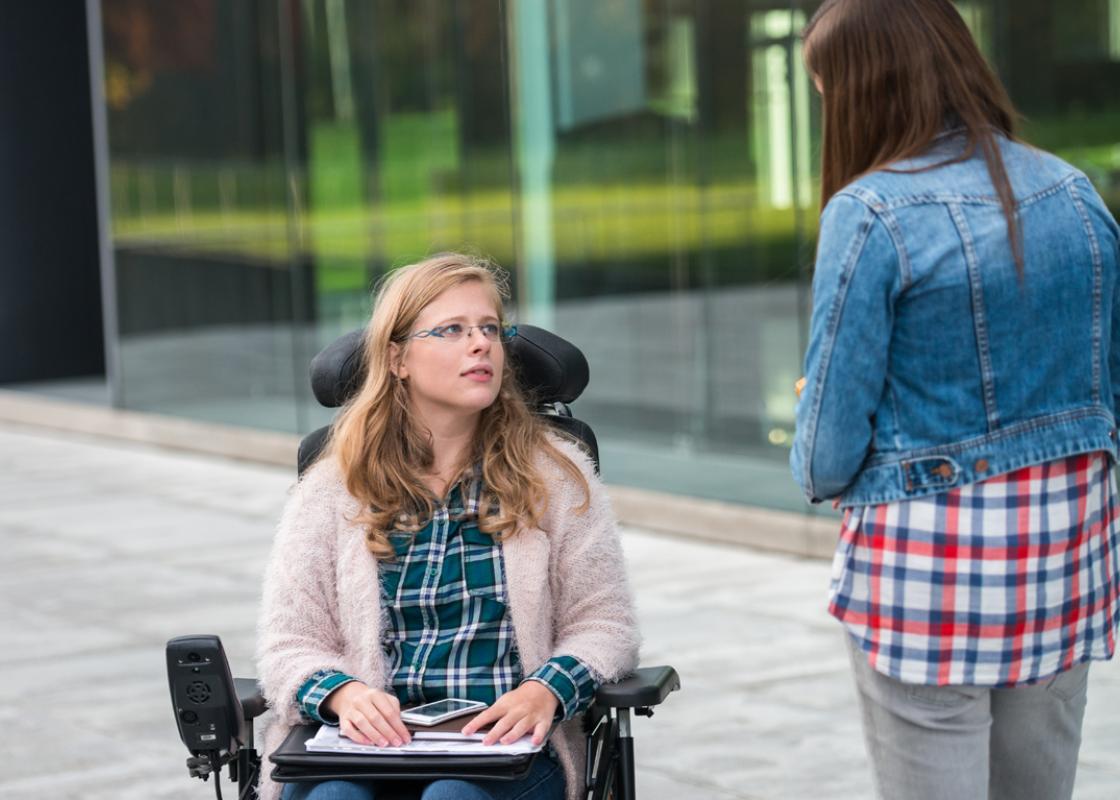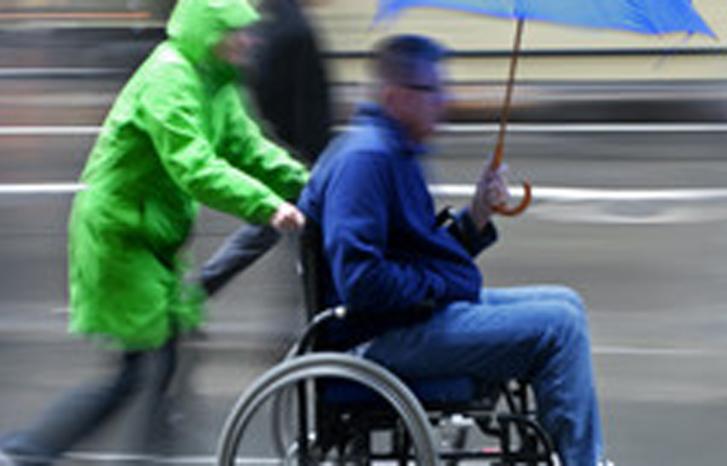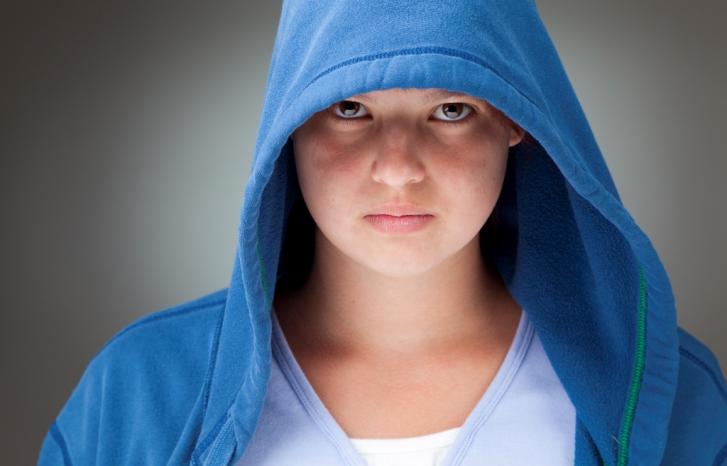Imagine going on a hotel holiday with your boyfriend. You inform the hotel in advance that you need adaptation for wheelchair. When you arrive at the hotel, you are assigned a twin room instead of a double room, which was what you reserved.
This is one of the stories the researchers in a European research project about the experiences of people with functional disabilities were told. Women experience that they are not expected to have a sex life, romantic relationships or children.
“Having a family is part of being a fellow citizen. Finding someone to be with, and having children, is a right other people take for granted. But it is not a matter of course for everybody,” says Anna Kittelsaa.
Citizenship in light of gender
Kittelsaa is senior researcher at Norwegian University of Science and Technology (NTNU Social Research), and has participated in the international project DISCIT - Making Persons with Disabilities Full Citizens. She has investigated how people with functional disabilities experience their lives. In the project, it is formulated in the following way: how they experience to live as active fellow citizens. Already here there is a gender dimension, according to Kittelsaa.

“Active citizenship is defined in close association to participation in the labour market, public life and politics. Within this, there is little consideration for women’s specific experiences.”
The researchers in the project have spoken to 217 people with reduced functional abilities from nine European countries. Among these, 104 were women. The women belong to different generations. In the interviews, the researchers have asked questions about the entire life cycle.
“In this way, we can get a broad insight into their experiences and see whether there has been a development through the generations.”
The nine countries covered in the project have different government systems and welfare services, but according to Kittelsaa, the similarities in the experiences are more interesting than the differences.
“We have demonstrated that they encounter obstacles, both attitudinal and practical.”
The obstacles that the women experience have to do with both functional ability and gender – sometimes at the same time.
No expectations of family life
Several of the older women the researchers spoke to had gone to special needs schools.
“One girl had been in a special needs school with almost only boys. She said that she felt completely lost when she was with other girls.”
“During the youth years we learn how we behave according to our gender in our interaction with other teenagers. Many people with functional disabilities miss out on this if they are deprived of the opportunity to socialise with other teenagers naturally.”
Kittelsaa points to a fact from research on functional abilities: It is common that the reduced functionality becomes the primary identity marker, before gender.
“You are not expected to be attractive as a partner or to become a parent.”
This is particularly common for women, although men also encounter other attitudes about sexuality and attractiveness than those without reduced functionality. The hotel that failed to give a woman in a wheelchair a double room is one example. Another example of how these expectations are expressed can be seen within the health service.
“A visually impaired woman asked her assistant if she might also help her children. The answer she got was that if you are visually impaired you must expect some challenges, also when you have children.”
You are not expected to be attractive as a partner or to become a parent.
‘Reduced functionality’ may include many things, both in terms of types of functional disabilities and in terms of severity. Both physical and mental conditions may cause reduced functionality. Expectations concerning family life were particularly low when it came to people with developmental disabilities.
“Only one of the women with a developmental disability had children. We also spoke to several participants with mental health conditions, and several of them had been deprived of their children.”
Those with physical functional disabilities, on the other hand, were met with attitudes that they would not be able to manage the practical sides of being a parent.
See also: Gay and disabled: Invisible and crystal clear
Barriers for women in education and work life
The researchers studied the women’s access to education and work life. Here, they found a generational perspective.
“For the generation born in the 1950s, functional disability was not the only barrier.”
“At that time you were supposed to be content with a simple job such as telephone operator. It was not only about functionality, it was about the common expectations to women in those days. They faced the same barriers as other women, just even stronger.”
It could be more difficult because they needed adjustments.
“For the visually impaired, for instance, it was complicated to get special teaching arrangements with the braille printing,” says Kittelsaa.
The choice of education was often connected to the expectations of starting a family.
“Some were told that they could not expect to have the education they wanted, whereas others heard that they will never get a husband, so they should at least make sure to have an education.”
For the generation born in the 1970s, there were more options.
“If they wanted children, they considered this an accessible choice. They did not experience the same barriers as the older generation.”
Among those belonging to the generation born in the 1990s, most were interested in getting an education.
“They expected of themselves to make something of their lives. They had support from their families and they had attended regular schools, so they were able to identify with people their own age.”
Kittelsaa emphasises that being with other people your own age during childhood is important in order to be able to participate in society on the same level as others.
“We get a lot from our family, but we fall short as gender or as people if we are deprived of the opportunity to identify with others our own age – and this does not only apply to the peculiar and the negative.”
“If you’re visually impaired, and everybody else has the same disability, you find yourself in a very unbalanced situation. No-one can take your arm and bring you along to do something different.”
Even though the development has been positive, the young today nevertheless feel that there are many barriers.
“There are still many barriers in the education system, as there is not enough adaptation. In Norway, it is very easy to just offer people a disability allowance without checking the actual opportunities. This reflects attitudes concerning what they can and should. We seem to know what is best for them.”
Involved in family and organisation work
Participation in society involves access to services, but also the opportunity to contribute. Most of the informants contributes in several areas.
“Many were active in organisations, particularly special interest organisations for the rights of the functionally disabled.”
Several of the informants were also recruited to the research project through such organisations.
“Many had been at the barricades. Some had worked after having negative experiences. Some had had children after having been advised against it. Now they wanted to fight for others’ rights.”
Contributing in the lives of families and friends is also a part of being active citizens.
In practice, it is about attitudes.
“Many took care of family and looked after other people’s children – the sort of things women do.”
Recruiting through organisations may give an unbalanced selection with unusually resourceful representatives for the group of people that the researchers are interested in.
“We didn’t only meet successful people,” says Kittelsaa.
“We also met people who had fought battles they couldn’t win. These battles could be about education or work, or the combination of this with children.”
The time squeeze is a well-known phenomenon in many families.
“But it is extremely unpractical to have a functional disability in addition to making the daily life add up, with everything it involves. Sometimes you have to make choices, or choose to just be a mother for a period.”
Attitudes are obstacles
Kittelsaa and the other researchers can see a development in their material.
“In terms of gender equality, women with reduced functional abilities are subject to the same development as the rest of us.”
But there is still a way to go.
“The formal barriers are not as high neither with regard to gender equality nor equality for the functionally disabled. They have the same rights. But in practice, it is about attitudes, particularly for the functionally disabled. Society does not expect them to achieve much in life.”
The little research with gender perspectives that has been done has focused on women.
“What or who confines them?”
“Many are restricted because of limited access. Norway is not world champion neither when it comes to adaptation in the education system, work nor transport. This is because some people have decided, or rather not decided how it should be.”
“But we all have attitudes. We have a history where people have had different value, judged by functional ability. Nobody wishes for a functional disability. And when you do not have reduced functional ability, you might not think about the fact that others who have more to carry - they are actually just like us. They are like most people. I think that the belief that they are a different breed is deeply rooted in us.”
Little gender perspective in research on functional disabilities
In the project, only the female experiences have been analysed in a gender perspective.
“We have included it in the analysis of the interview material. The questions in the project have to a small extent addressed women’s specific experiences; the same questions have been asked to both men and women. Therefore, we have looked at what we can extract from the data from a women’s perspective.”
With women’s specific experiences, she means that the research design did not include many questions about family life or children, or challenges related to gender. In this way, the project differs from other research within the field. In 2017, Kittelsaa contributed to a report on gender in research on functional disabilities in Norway. It showed that gender perspectives are lacking.
“This particularly applies to men. The little research with gender perspectives that has been done has focused on women.”
“What is the most important aspect of your study?”
“It may tell us something about what it means to be man and woman. We know that men and women have different experiences. We need to knock the bottom out of the attitude that people with functional disabilities are genderless and asexual. It has to do with attitudes – these are living people, and they have a gender.”
Translated by Cathinka Dahl Hambro.
The research is a result of the project Making Persons with Disabilities Full Citizens – DISCIT, led by Norwegian Social Research NOVA at OsloMet – Oslo Metropolitan University.
The findings are described in the chapter ‘Gendering active Citizenship: experiences of women with disabilities’ by Marie Sépulchre, Victoria Schuller, Jennifer Kline and Anna M. Kittelsaa in the book Understanding the Lived Experiences of Persons with Disabilities in Nine Countries edited by Rune Halvorsen, Bjørn Hvinden, Julie Beadle-Brown, Mario Biggeri, Jan Tøsselbro and Anne Waldschmidt.



